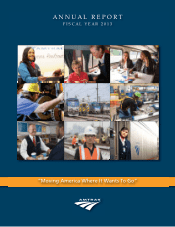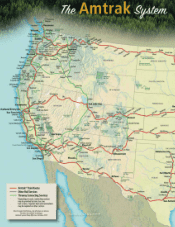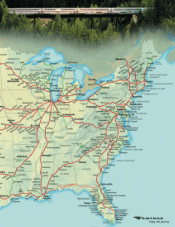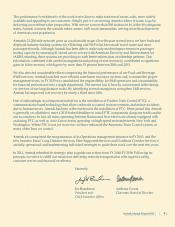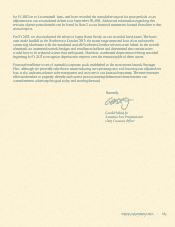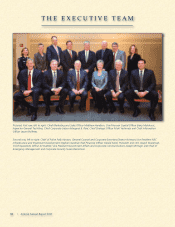Amtrak 2013 Annual Report Download - page 3
Download and view the complete annual report
Please find page 3 of the 2013 Amtrak annual report below. You can navigate through the pages in the report by either clicking on the pages listed below, or by using the keyword search tool below to find specific information within the annual report.
4| Amtrak Annual Report 2013
The National Railroad Passenger Corporation (Amtrak) is incorporated under the terms of the District of
Columbia Business Corporation Act (D.C. Code Section 29-301 et seq.), in accordance with the provisions of the
Rail Passenger Service Act of 1970 (P.L. 91-518).
Amtrak is operated and managed as a for-profit corporation. Congress created Amtrak in 1970 to take over the
intercity passenger rail services of approximately two dozen private railroads. In exchange for relieving these
companies of their passenger rail obligations, federal law and regulatory order required them to allow Amtrak
access to their tracks so it could independently operate its national intercity passenger rail network.
In establishing Amtrak, Congress found that “modern, efficient, intercity railroad passenger service is a
necessary part of a balanced transportation system; that public convenience and necessity require the
continuance and improvement of such service… [and] that the traveler in America should to the maximum
extent feasible have freedom to choose the mode of travel most convenient to his needs…”
The most recent federal authorizing legislation, the Passenger Rail Investment and Improvement Act of 2008
(P.L. 110-432), assigned Amtrak the mission “to provide efficient and effective intercity passenger rail mobility
consisting of high quality service that is trip-time competitive with other intercity travel options.”
Amtrak manages a national network structured to provide short-distance services of 750 miles or less and
long-distance trains that provide system connectivity on routes ranging up to 2,438 miles in length. It serves 46
of the 48 contiguous states and provides mobility to the nation’s largest urban areas and some of its smallest
rural communities.
It partners with 18 states under 19 operating agreements to offer short-distance services. Additionally, with more
than 99 percent of its procurement money invested in domestically manufactured products, Amtrak strives to
connect and build the American economy. Over the past decade, the company has set numerous ridership and
revenue records, and has endeavored to improve its system and equipment while safeguarding taxpayers’
investment in the national network.
Amtrak strives to move America where it wants to go. Three goals — safety and security, customer focus, and
financial excellence — guide Amtrak’s business practices and ensure the company employs its financial and
human resources in the most effective manner to meet the changing demands of the transportation
marketplace.
F O R E W O R D

